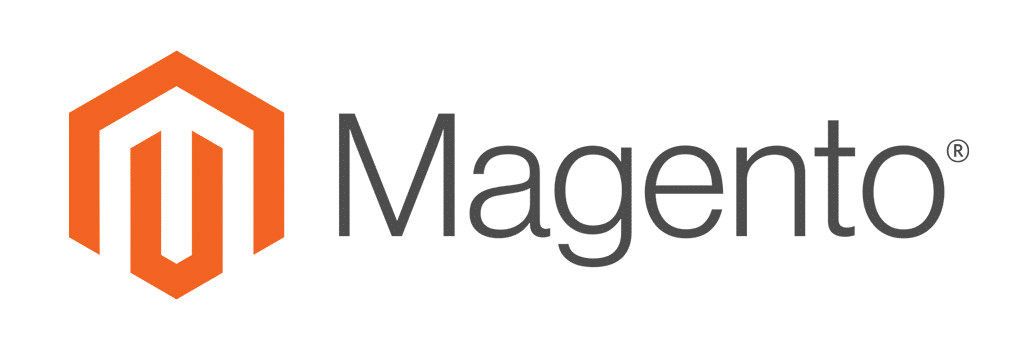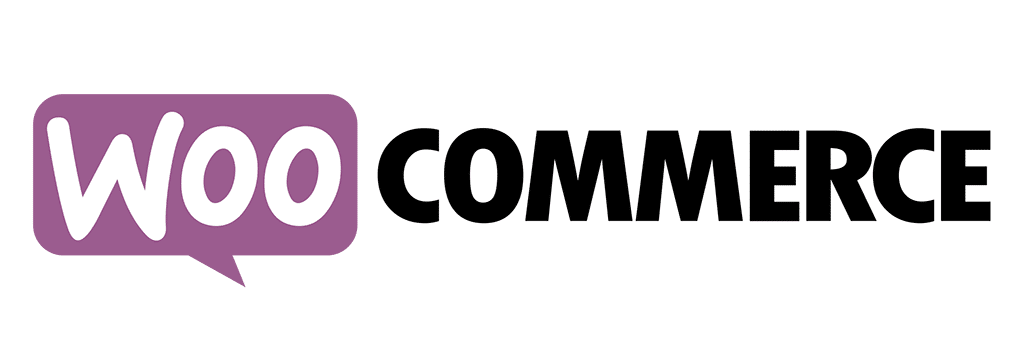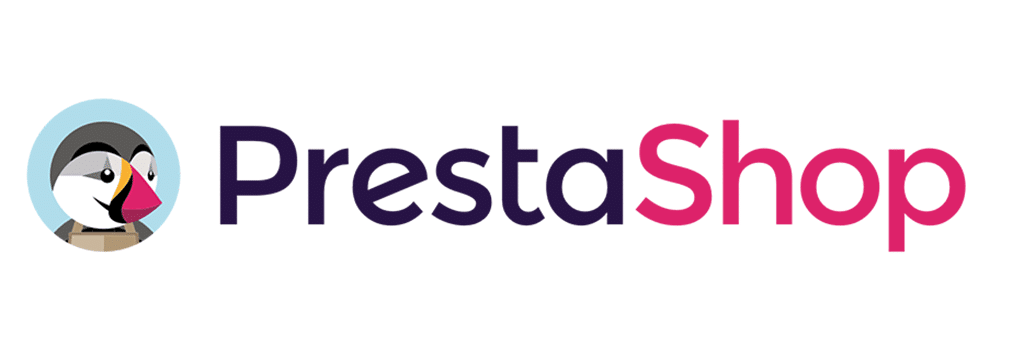Discover the best e-commerce platform to help grow your business. Choosing the right e-commerce platform to support your business is key to your success. The good news is, there’s some fantastic options out there. Something to suit stores of every size and sector.
To help you make the right decision, we’ve compiled an overview of the main features and benefits of each platform. Prices and some specifics can change over time. With this in mind, we haven’t included any pricing or data that is likely to fluctuate.
Read on to discover the perfect e-commerce platform to help grow your business.
Things to consider before deciding on your e-commerce platform
 Choose an e-commerce platform that will grow with your business
Choose an e-commerce platform that will grow with your business
Make sure you consider how your business might grow over time before you sign up. When you’re just starting out, this can be a challenge. If you’re unsure, opt for a platform that offers good flexibility and scalability. If budgets aren’t set in stone and you want to avoid unexpected costs, it might be best to choose a provider that is ready to go, out-of-the-box.
Choose your apps and extensions wisely
If you need to control costs, be selective with the apps you get. And keep in mind the extra fees for third-party gateways.
Every plugin requires adding more code for a browser to load so adds a layer of complexity to your site. This can impact on your site speed and performance. Obviously you want to make sure that your site offers the best user experience possible. But it’s important to be judicious in the plugins you choose.
The quality of the plugin is paramount here, rather than the amount you use so always select plugins from a reputable source. If you are concerned that your site has slowed down, you can check its performance using tools such as Google’s PageSpeed Insights.
Consider the level of security you need with your e-commerce platform
Making sure your e-commerce site has a good level of security is vital for your ongoing success. Your customers need to be able to trust you with their hard-earned money and personal data. Plus you want to know that your site is protected against cyber threats and fraud. The e-commerce platforms that we mention in this guide offer different levels of protection out-of-the-box. Enhancements are available via add-ons, extensions and apps.
>Top tip< Security standards and compliance requisites can change over time and it’s your responsibility to keep on top of this.
Your e-commerce platform may inform you of such changes. For the latest news, it’s a good idea to sign up for updates with some reputable security sites. Or the providers themselves.
Here are some of the main security standards you’ll need to consider when choosing your platform.
PCI-DSS compliance:
PCI-DSS compliance is a must-have for all good e-commerce merchants. In a nutshell, it demonstrates your ability to safely and securely accept, process, store and transmit cardholder data in order to prevent data and fraud breaches.
SSL Certificate:
SSL Certificates shows your website can ensure that sensitive information transmitted via the internet is encrypted and secure. Having an SSL Certificate helps build a trust with your customers and shows your commitment to security best practice.
HTTPS:
HTTPS is a data transfer protocol that should be used instead of HTTP on all pages of your website where data is created. Unlike HTTP where information is sent as plain text, HTTPS encrypts the data. Many e-commerce customers are familiar with the difference. So, not only can using HTTP risk your site’s security, it could also impact negatively on your sales and reputation.
>Top Tip< HTTPS can affect the page load speed of your website. Only use it on pages that collect data to keep your website running as efficiently as possible.
DoS and DDOS protection:
DoS and DDOS protection guards against denial of service and distributed denial of service attacks. The best way to protect your site from the threat of these attacks is to monitor the traffic. Some managed hosting providers will do this on your behalf using technologies that differentiate malicious and legitimate traffic. The software then diverts the malicious traffic from your site.
Firewalls:
Firewalls work as a gateway between two or more networks, blocking malicious or unauthorised traffic before it harms your site. Many e-commerce merchants consider proxy firewalls to be the best option. This is because they act as a complete barrier between the server and computer. A Gateway is another popular firewall. Merchants can configure these to allow computers to transit information from outside your network.
Think about how you’ll manage SEO

Most e-commerce platforms provide at least a basic level of SEO. They should also offer mobile optmisation.
Here are some of the SEO functionalities you should consider for your website:
Customisable URLs:
By including important keywords in your URL you can improve search rankings. It also helps search engines index your site and builds trust with your site as customers can see their search reflected in the URL.
Metatags:
Most e-commerce sites include a template to optimise the page titles and descriptions across your site. As above, this helps customers find you and makes it easier for search engines to index your site.
>Top tip< Take the time to add unique product descriptions to every page. This tells visitors more about the category and product and helps search engines understand the page better. Prioritise your keywords in the description and keep it concise and informative.
Sitemaps:
Good e-commerce sites will generate and submit sitemaps automatically. This helps search engines discover your site and index the pages.
Other SEO functionalities that e-commerce platforms might offer include: identifying duplicate product pages, keyword research tools, canonical URLs, blogging tools and image optimisation apps.
Consider the level of customer support you’ll need for your e-commerce platfrom
Levels of customer support differ greatly from platform to platform. With open-source platforms such as Magento and WooCommerce, support provision is complex. This is because every site has a different set up and unique functionalities. The good thing about open-source is the large and highly-engaged community that’s available for query resolution and advice. Naturally, you need to consider that this version of support may not be as prompt as a paid or contracted service.
It’s a good idea to consider your support requirements, your budget and your technical abilities before you build your site. There’s little point in creating a complex site on a platform where support is limited and you can’t troubleshoot issues yourself. Every moment your site is inactive is a customer lost, after all.
So, with that done, let’s take a look at the platforms themselves.
Shopify
 Shopify in Numbers – 2019
Shopify in Numbers – 2019
- 1m+ merchants using Shopify worldwide
- $1.578bn achieved in revenue
- 300m consumers bought from Shopify merchants
- Merchants selling on the Shopify platform for 12 months or more grew GMV year-over-year at an average monthly rate of 21%.
- Shopify Pay helped facilitate nearly $4.0 billion in GMV.
Shopify: The e-commerce platform at a glance
Shopify is easy to use, highly customisable and excellent value for money e-commerce platform. Over 2,400 paid apps and a good range of SEO and marketing tools make it easy to enhance and optimise your site. Plus it integrates well with other e-commerce and social media platforms.
Key features:
- Easy to use
- Highly-customisable
- Hosting included
- Robust security
- 100+ payment gateways
- 2,400+ paid apps
- Solid inventory management
- Multichannel integration
- Abandoned cart recovery
- Automatic shipping rates from carriers including UPS, USPS, and FedEx.
- Strong SEO functionality
Shopify sales features
One of Shopify’s key strengths is its sales features. These include abandoned cart recovery to help you optimise sales and improve customer experience. Research shows that 69% of shopping carts are abandoned. Prompting your customers to resume shopping, and making it easy to do so, should be a priority.
You can also configure the e-commerce platform to auto-calculate shipping rates which will save you and your customers time. For businesses who are out on the road there’s a handy POS card reader available.
Shopify also allows you to create customer profiles so you can send targeted communications based on customer behaviours and preferences. This tactic really helps increase conversion rates and fosters customer loyalty.
Design and customer journey
This is definitely one of the key highlights to Shopify, and the reason it makes it very attractive to many merchants. For those with limited technical skills, Shopify is a dream come true. You can create your site without the need for a designer or web developer. If you have programming skills, you can customise to your heart’s content.
There are 10 free themes and over 60 premium themes available. All are professionally designed, mobile responsive and customisable. Some themes also come with multilingual options. Shopify customers can also download free high-res images from Burst.
Important to consider: Choose your theme carefully as the content doesn’t automatically reformat when you switch designs.
Inventory/product management
Every price plan from Shopify offers unlimited inventory, so if you have a large inventory this can be a real positive. Inventory management is crucial to your ecommerce store, but can be a time-costly and complex activity. Shopify can help simplify this, even with a large inventory. Products can be sorted by category, season, sale, price, vendor, inventory level and more. You can also show available sizes or colours. Add in some handy apps and they’ll help with automating reminders and forecasting demand. Use the wireless barcode scanner to keep track of stock levels.
Payment options available
Shopify offers its own payment gateway, Shopify Payments, though this isn’t available worldwide. Unfortunately, Shopify is the only platform to enforce its own transaction fees, but if you’re eligible for Shopify Payments you can avoid paying these.
Besides all the usual third party payment providers, you can also configure your site to accept cryptocurrencies.
When it comes to security, Shopify has it covered. It handles protection against cyber threats, runs updates, and meets all compliance requirements. This high level security is included in all Shopify plans, including SSL security and it’s Level 1 PCI DSS compliant.
Marketing and SEO
Marketing through Shopify is simple and you don’t need a great deal of knowledge. You can create and manage email and social media campaigns and get good insights into what’s working and how to make improvements. Shopify’s free app, Kit, is a particular highlight. It helps you automate a range of tasks including social media posts and prioritising products you want to promote.
Shopify takes care of the main requirements for SEO including header code, alt text for images and customised URLs. Useful prompts appear when adding products to help you optimise your listings. The high standard of categorisation also helps with SEO. The main thing missing is keyword support, though you can manage this with a well-chosen app.
Audience insights/analytics
Shopify’s analytics offer a high-level view of your sales performance. The dashboard is easy to interpret with clear metrics to help you keep an eye on conversion rates, activity on different channels, the location of your customers and much more. You can compare results between different time periods and monitor trends over time. You can also keep track of your customer engagement including returning customer rate to help you inform your customer retention strategies.
All these metrics offer valuable insights into how your visitors are finding you and how well your site content and offers are performing.
Currently, Shopify’s analytics don’t include blog insights. This means you will need to link with your Google Analytics for this data and a more in-depth view in general.
Multi-channel integration
If you’re already selling on other channels and looking to have your own e-store, or you’re thinking of creating a multi-channel strategy, Shopify offers a seamless shopping experience with other channels. You can quickly expand into; Facebook, Instagram, Amazon, and eBay. However, each of these platforms does require a specific app to expand, but many of these are free and easy to use.
Order processing and shipping
Orders can be completed manually or by an automated process. You can configure your site to automate common tax calculations using default sales tax rates.
Another useful feature is synching POS between the app and online store. Customers who are on the Basic plan and above can use this. They can also get a free credit card reader which is handy for businesses who sell at events.
Shopify has an excellent shipping information centre to help businesses set up shipping processes, optimise rates and manage labels and tracking.
Shopify has partnerships with USPS, DHL Express, UPS, and Canada Post with more shipping options available via paid apps.
Shopify also supports dropshipping, but you’ll need to use a specific app.
Shopify: The e-commerce platform for those who are new to online retail
Shopify’s simplicity makes it a great e-commerce platform for online merchants who are just starting out. The dashboard is easy to navigate, it’s super customisable and you don’t need any technical skills. Everything you need to get going is ready out-of-the-box. Even the basic price plan is enough to cater to the needs of most fledgeling businesses.
Shopify is a hosted solution. All you need is an internet connection and a web browser.
As Shopify is a hosted solution, it’s good for businesses who expect to receive a lot of traffic. This is because you don’t need to worry about having enough bandwidth.
Shopify – pros
Easy to use
- Good value for money
- Free hosting
- Good for dropshipping
- Good range of free templates
- Good range of apps
Shopify – cons
- Transaction fees for third party gateways
- Limit of three options per product (though you can still create up to 100 variants)
- No integration with MailChimp
- Some areas of CMS such as custom fields can be tricky to manage
Magento Community
 Magento in Numbers – 2019
Magento in Numbers – 2019
- $155 bn+ in transactions every year.
- 400,000 community members
- 250,000+ merchants worldwide
- 1.9% share of the CMS market
- Accounts for 12% of the ecommerce market (including open source and enterprise versions)
- The number of Magento sites nearly doubled between March 2017 and August 2018.
- Magento has held the top spot on the Internet Retailer 1000 list for four years in a row.
Magento: The e-commerce platform at a glance
Magento is a powerful open-source e-commerce platform. Magento is free to use though other costs need to be factored in, such as hosting. The platform is very flexible and offers good functionality. As there is some technical input required, it can take time to get up and running.
Magento Community is completely free. But it’s important to be aware of the other costs involved when choosing this platform. Support from programmers or designers can be expensive. Plus you need to factor in hosting, buying a domain name, extensions and ongoing costs for support and maintenance.
For merchants seeking greater functionality, paid versions are available.
Key features:
- Integrates with MailChimp, PayPal, Salesforce and other third parties
- Integrated B2B functionality
- Instant purchase option for regular customers
- Wide variety of product browsing options
- Raft of customer loyalty schemes
- Easy integration with social commerce and social media platforms
- Customer segmentation and personalisation
- Real-time shipping rates from a range of carriers.
- Out-of-the-box access and account registration with shipping partners including UPS and FedEx
- Automated order fulfillment and logistics add-ons.
Sales features
One of Magento’s key strengths is the ability to customise and personalise the shopping experience. Merchants can display promotions and listings based on a variety of information. This includes purchase history, location, wish list, customers with abandoned carts and more. You can automate rules to up-sell or cross-sell to particular customers.
A range of product listing, bundling and grouping options make catalogue management easy. Plus a useful Elasticsearch facility provides suggestions for misspellings so customers can always find your products. Merchants can display two or more products side-by-side for comparison. Videos from YouTube and Vimeo help promote and explain products.
Inventory/product management
Magento’s user-friendly admin panel helps merchants manage billings, inventory and customer data. Users can assign products to multiple sources and track inventory by location. Batch import/export and tax rates are defined by location. Another smart addition is the ability to customise messages alerting shoppers of low stock levels. When stock needs replenishing you’ll receive a notification.
Order processing and shipping
Order processing is managed well via the Magento interface. There’s a one-page checkout facility, SSL support and the option to checkout without registering for an account. Merchants can create multiple shipment invoices and credit memos. It can also be set up for customer representatives to create orders and manage accounts.
Magento offers a variety of shipping options. Shipping to multiple addresses can be managed in one order. They also supply real-time rates from UPS, UPS XML (account rates), FedEx (account rates), USPS and DHL. Merchants can set flat fee rates per order or item and table rates via a variety of options including weight, destination and price. Advanced packing rules help reduce shipping-related costs.
Customers will love the dynamic shipping options facility. Helping them get the most accurate and competitive billing.
Payment options available
Customers can pay by credit card, PayPal, Authorize.net, Google Checkout and checks. They can also use payment modules such as Cybersource, ePay, and eWAY.
An instant purchase checkout option can be set up for returning customers. Store payment and shipping preferences are fully configurable.
Magento is highly secure and is Level 1 PCI-DSS compliant. Don’t forget, your store’s security is also reliant on your hosting provider. Magento offers a free security scan tool. They encourage customers to register for security updates. Access the Magento security service.
Design and customer journey
Magento offers a wide range of free and paid templates. These are completely customisable from both front and back-end, but may need more technological knowledge to adapt. You can also create variations for different countries, brands and campaigns. Magento’s swift checkout facility mentioned above is part of a well-curated customer journey. This also includes excellent categorisation, well-designed templates and good SEO. Magento’s drag-and-drop facility is a particular highlight.
The platform’s power is impressive, supporting up to 500,000 products and 80,000 orders an hour. It supports HTML5 and offers easy image size adjustments and video.
Marketing and SEO
Magento offers a variety of coupons, discounts and other promotional tools. Merchants can set up price rules to trigger promotions based on specific requirements. These include by time, customer value or to offer free shipping costs over a nominated amount.
You can create, customise and automate communications including newsletters and promotions. Full integration with Amazon Seller Central and Google Ads is supported.
With SEO-friendly URLs, Google sitemap integration, tags and metadescriptions, Magento is great for SEO. The platform also gives you complete control over navigation links and customising page titles. The latter helps manage how products appear in search engine lists. So it’s vital for targeting customers.
Quick page load time is crucial for SEO. There are many configuration adjustments available, though Magento’s excellent architecture is enough for most retailers, out-of-the-box.
Magento: The e-commerce platform for those who need freedom and customisation
Magento suits merchants with technical skills or those who are willing to work with a programmer or designer. Magento is a super flexible platform and offers users a lot of freedom. For some, the CMS may be difficult to navigate and new users might find it a steep learning curve. Magento has an active community of developers and programmers to help with issues.
Magento – pros
- Flexible
- Free, open-source solution
- Wide range of features
- Good community support
Magento – Cons
- Extensions and other costs can make it expensive
- Can be a steep learning curve
- As it is open-source, getting support can be a challenge
WooCommerce
 WooCommerce in Numbers – 2019
WooCommerce in Numbers – 2019
- 26% of online stores use WooCommerce
- 93.7% of all WordPress ecommerce websites use the WooCommerce plugin.
- Customer support offered across 58 countries
WooCommerce: The e-commerce platform at a glance
WooCommerce and WordPress are both free and open-source. As with Magento and some other platforms, additional costs are involved. These include hosting, domain fees and paid apps. With a wide variety of free apps available, you should be able to control costs if needs be.
If you don’t want to pay development costs, choose a theme by a coder with WooCommerce experience. This will help ensure that it is compatible with the latest version of WordPress.
Apps for payment gateways can also incur costs. Shop around before choosing the right one for your business.
Key features:
- WordPress content integration
- Pre-installed payment gateways
- Geo-location enabled taxes
- Robust security
- Unlimited products, images and users
- 400+ official extensions
- Unrestricted customisation
- Built-in blogging
- Ability to embed products on any page
- Good SEO
- Ability to add affiliate products
Sales features
In addition to physical products, merchants can sell digital downloads, subscriptions and appointments. There are no limits on product listings or images. The platform is flexible, with unlimited customisation. Vendors can promote products from any page. This helps move customers through the sales funnel from blogs or other landing pages.
Excellent categorisation options help customers find what they need. You can also show related products to encourage cross-sell and up-sell. Use the WooCommerce widget to showcase items, including those in the sale or recently viewed. To establish trust, vendors can show reviews and ratings on product pages.
WooCommerce also offers the ability to link to affiliate products on other sites, but unfortunately it does not currently offer abandoned cart recovery.
Inventory/product management
WooCommerce has good inventory management out-of-the-box. Merchants can track stock levels and get notifications for low and out-of-stock items. You can keep stock after order cancellation, hide out-of-stock items and much more. If you have extra requirements there are a number of free and paid apps.
Payment options available
WooCommerce accepts payments via Stripe and PayPal. You can also take credit card payment, Direct Bank Transfer, checks or Cash on Delivery.
The platform is regularly audited by Sucuri, an industry leader. Don’t forget that your store’s security is also reliant on your hosting provider.
Order processing and shipping
Order processing is simple and straightforward. The platform offers all the functionality you would expect. Plus it’s highly configurable.
Order IDs in WooCommerce are non-sequential. This is because they use the default WordPress ID approach. If you want to use sequential order numbers, use the Sequential Order Numbers Pro plugin.
Merchants can enable guest checkout for customers who don’t want to register.
WooCommerce offers a shipping calculator on the shopping cart page. This means there are no surprises for your customers at checkout.
You can restrict options available based on customer location. Merchants can define specific rates per product, including extra charges for heavy items. Or you can set a flat rate. Simplify shipping and tax calculations using the geolocation auto-detect.
Design and customer journey
WooCommerce offers a fantastic range of design themes, both free and paid. Every business type and style is taken care of. All have an intuitive user interface to help you display and manage your products to their best advantage.
The templates are customisable but it’s important to be careful when choosing this path. When you update the theme, all modifications will be overwritten.
Marketing and SEO
Merchants can configure the platform to send notifications to customers at critical stages. For example, a thank you or up/cross-sell offer after sale. Coupons for discounts and free shipping offers can be triggered. You can also get plugins to improve search functionality, enhance analytics and much more.
WooCommerce runs on WordPress. This is recognised as one of the best platforms for SEO. SEO on this platform is different from sites like Shopify, which has SEO functionality built-in. With WooCommerce you get built-in code that is optimised for SEO. But you don’t get the SEO features offered with Shopify.
With a bit of work and a well-chosen app this needn’t be a problem. Make sure your URLs and page titles reflect what you’re selling. And how your customers search for them. Keep your site navigation simple. Add alt text to images (sticking to a short, clear description of the item). Try not to duplicate content. Keep your product descriptions short and catchy. And prioritise the top features and selling points.
The Yoast SEO plugin is an excellent, and well-established choice for WordPress sites. It’s powerful, easy to use and free.
WooCommerce: The best e-commerce platform for those who already have a WordPress site
WooCommerce is great for vendors who want to sell through an established WordPress site. Or who want to build one from scratch. WooCommerce is scalable, great for SEO and is customisable. As it is built on WordPress, the user experience is excellent and there’s no coding required.
For merchants who want to get up and running quickly, WooCommerce is a great choice. Some technical skills may be required for sites that need specific functionality. Hosting is not included with WooCommerce. If you are expecting high volumes of traffic, choose hosting that can keep up with your bandwidth usage.
WooCommerce – Pros
- Excellent range of design templates
- Large, helpful community
- Free core software
- Flexible and customisable
- Good SEO
WooCommerce – Cons
- CMS and setup can be a challenge for users with limited technical skills
- No centralised support
- Additional costs for web hosting and security
PrestaShop
 PrestaShop in numbers
PrestaShop in numbers
- 76 languages available
- 108,000 stores worldwide
- 1m community members
- 108K paid sales modules
- €2,5m sales via PrestaShop Checkout
PrestaShop: The e-commerce platform at a glance
PrestaShop is an open-source, self-hosted e-commerce platform. You can download it for free and change it to suit your needs. It is reliable and highly configurable. PrestaShop is user-friendly in general, though configuring the back-end may need some technical skill.
Key features:
- Manage multiple stores with one installation
- Powerful catalogue management
- Intuitive, easy to use interface
- One-click hosting setup
- Highly-customisable
- Ability to sell physical or downloadable products
- 1500+ themes to choose from
- Wide range of marketing tools baked in
- 75 language options
- Good support from user community
Sales features
PrestaShop offers a Multi-store option to connect several stores with different domain names. You can manage them through a single admin panel. The platform supports both digital and physical products. A handy combinations generator enables the creation of product lists with a number of variants. You can also set minimum quantities for specific products.
Automated abandoned cart emails prompt customers to return to your store. You can also automate emails to follow-up a transaction. This creates opportunities for up/cross-sell or to encourage newsletter signups.
PrestaShop translates into over 25 languages. So it’s great for businesses with global reach.
Multi-channel integration
PrestaShop’s Store Manager app integrates eBay and Amazon with your store. There is currently a 14 day free trial available. Social media platforms and other e-commerce channels are also available, though most incur a charge.
Inventory/product management
PrestaShop’s inventory management is straightforward and intuitive. Vendors can manage complex inventory with one-click. You can import and export quickly, set attributes, sort products, group products, add bulk discounts and much more. Set minimum sale quantities and add a customised message when items are out of stock. We particularly like the facility to upload files showing customised goods .
To keep your store running at the latest version, PrestaShop has a one-click button.
Payment options available
PrestaShop vendors must set each payment gateway up individually. This is fairly easy to do but can incur costs. Some of the main suppliers such as PayPal, Klarna, Stripe and Amazon are free.
The platform supports a wide range of other payment gateways though many incur a fee.
This e-commerce platform also detects customer location and can configure taxes and exchange rates accordingly.
PrestaShop is PCI Compliance ready. However, this does not mean that it is PCI-compliant. Vendors will need to buy an SSL certificate and check in regularly on security patches.
Design and customer journey
PrestaShop offers over 1,000 modules and themes. Some are free while others are available as one-time purchases. As modules are created by different developers, vendors need to make sure they are all compatible.
The platform publishes a directory of PrestaShop experts. These can help vendors optimise and improve their stores.
Marketing and SEO
Several key marketing tools are available as free add-ons. This includes MailChimp, email marketing, live chat and tools to optimise conversions. A wide variety of paid apps are available for greater functionality.
PrestaShop offers a good range of SEO modules. Most incur costs. Vendors with modest budgets can prioritise lower cost apps for adding schema, alt text and tags.
We like the Google Rich Snippets module. This helps you improve your reach and provide a better shopping experience.
Marketing tools/capabilities
PrestaShop has a good range of marketing tools baked-in.
Order processing and shipping
PrestaShop offers a handy one-page checkout out-of-the-box. They also have several other checkout and shopping cart tools to help ensure compliance with specific country laws.
Shipping options
The platform has a small number of free shipping add-ons. For paid options, vendors can select a single shipping platform. Or install the plugins of each carrier. You can then set parameters for each carrier. This includes shipping costs, ranges, sizes, free shipping and more. Tax configuration is straightforward. This includes showing taxes for customers in the United States.
Prestashop: The best e-commerce platform on a budget
PrestaShop suits e-commerce companies who need a budget-friendly option. Prestashop is an e-commerce platform that comes with most e-commerce features out-of-the-box. Merchants who want a lot of customisation will need to be familiar with CSS, PHP, and HTML. Or, of course, you can hire a developer.
If you have a modest marketing budget, PrestaShop is a great choice. Most of the functionality you need is available without extra plugins or extensions.
PrestaShop – pros
- User-friendly
- Highly customisable
- Good security
- Good marketing tools
PrestaShop – cons
- Managing some elements of CMS can be a challenge
- Can be difficult to scale-up
- No centralised support
Wix
Wix in Numbers – 2019
- 413,358 paid Wix-based websites
- 154m users and 332,000 Wix e-commerce users
- Over 44,000 apps are downloaded daily from the Wix App Market
- $603.7m revenue (2018)
Wix: The E-commerce platform at a glance
Wix is a website builder with good functionality for e-commerce businesses. Wix allows a lot of creative control. It is feature-rich and offers a wide range of tools to help you create a beautifully designed store.
Wix has a good free plan and a range of paid premium plans to suit all budgets. Some of Wix’s top premium features only cost a little extra and can make a significant difference to your site. There’s also a high-end plan called Wix Enterprise.
A key advantage of using Wix is free and reliable web hosting. Find out more about Wix web hosting.
Key features:
- Over 500 designs
- Rich media design features
- Easy and intuitive to use
- Drag-and-drop content editor
- Free and reliable web hosting
- Highly customisable
- Personalised Google Mailbox
- Live chat
- Unlimited pages
Design and customer journey
Great design templates are one of Wix’s strengths. There are over 500 templates available. All beautifully designed and customisable.
There’s plenty of visual tools to bring your site and products to life. You can add video or animation effects to an element in a heading, menu or photo. You can also apply zoom, fade-out, spin, parallax and reveal effects. There are 100 fonts to choose from or you can upload your own.
It’s important to remember that you can’t switch templates after your website goes live. So, make sure you choose the right one for your store, both short and long-term.
Sales features
Wix has a good selection of sales features, out-of-the-box. Both physical and digital products are supported. There are no rules about product types. Appointment bookings are taken care of too.
There are plenty of opportunities for good product presentation. The zoom function is a particular highlight. Merchants can add up to 15 product images per item. A variety of languages are available without the need for configuration
Wix also offers abandoned cart recovery, subscription forms and video integration.
Inventory/product management
Wix lets you sell an unlimited amount of products. This includes physical items, digital downloads and services. You can create and distribute a variety of discount and promotional codes. The platform also facilitates the mass import of products via CSV files. This saves you time and hassle.
Other apps are available offering guest checkouts, inventory tracking, social commerce and more.
Order processing and shipping
Wix has good order processing and management functionality. Everything you need is available under one interface. Configure your site to automate invoices or add notes to orders. You can also update multiple orders simultaneously.
Wix allows you to set shipping and tax rules from the dashboard. This includes rates by weight, price, product and more. You can also apply flat rates and free shipping. Plus there’s a useful feature for calculating real-time shipping. Merchants can track shipping using a barcode scanner. This e-commerce platform also offers a variety of options for printing labels.
Payment options available
Wix supports a variety of different payment options, including PayPal, Stripe and WorldPay. These aren’t available yet in every country.
All Wix websites come with built-in SSL security certificates. The site is Level 1 PCI DSS compliant. The checkout process is secure via HTTPS / TLS encryption.
Marketing and SEO
Wix doesn’t come with a wide range of built-in marketing tools. However, it does offer a range of marketing packages called Ascend. This includes SEO tools and social media tools, lead capture forms and much more.
Wix also offers a good package for creating emails.
Wix has a good range of built-in SEO tools. These include default meta tags, customised URLs, sitemaps and canonical URLs. Wix offers a personalised SEO starter pack to help pick keywords and get you found online.
There’s a host of SEO apps available from Wix’s app market if you need extra functionality such as keyword support.
Multi-channel integration
Wix doesn’t currently support multichannel selling. There’s a choice of third-party apps such as Ecwid which offer the extra functionality.
Wix: The E-commerce platform for those who have no technical skills
Wix is easy to use and has a useful drag-and-drop editor. This, coupled with the preview function, makes it great for e-commerce retailers who want to create a striking storefront but don’t have specific design skills. Wix is scalable and suitable for anything from small portfolios to small-to-medium stores. Larger stores that need to manage bulk orders may be better suited to platforms like Shopify.
If you rely on Google Analytics, take note. Wix only connects with third party analytics if you have a connected domain.
Wix – pros
- Intuitive drag-and-drop interface
- Good selection of design templates
- Variety of useful features
- Good marketing functionality
Wix – cons
- Limited reporting and analytics
- Your site is not transferable if you decide to leave
- Content cannot be transferred between templates
Conclusion: Which e-commerce platform is best for you?
 Shopify – summary
Shopify – summary
An easy to use, professional-looking e-commerce platform with everything you need to get going, out-of-the-box. Suits a wide variety of businesses. With free hosting it’s a great choice for merchants with high volumes of traffic.
Magento – summary
A popular, open-source platform that’s highly customisable and boasts a variety of features. Users with limited technical skills may struggle. Good SEO through WordPress. Built-in upsell and cross-sell functionality. Good third-party integration.
PrestaShop – summary
Flexible, low cost and highly-customisable, PrestaShop is a good solution, out-of-the-box. It has a range of great marketing tools. Customisation and some aspects of the CMS require technical skill.
Wix – summary
Wix’s drag-and-drop interface and a variety of great features make it a good choice for merchants with limited technical or design skills. It has a range of marketing tools but lacks reporting tools out-of-the-box. The site is not transferable so customers need to be sure of their choice before purchase.
WooCommerce – summary
WooCommerce is perfect for if you already have an existing website – particularly if it’s ranking well – that you want to turn into an online business and sell products on. WooCommerce is also scalable, built through WordPress so technical skills are not necessary, and can be great for SEO.
We hope this guide to the best e-commerce platforms has helped you decide on the right provider for your business. There’s certainly a lot to consider. If you’re struggling to decide, take some time. Check out a range of unbiased reviews from businesses of your size and sector. Don’t be afraid to contact the platforms for clarification. And don’t forget that many platforms offer free trials.
Good luck with your research. Let us know how you get on. And if you want to know more about a shipping tool that works with your e-commerce platform, be sure to sign up for free today.

 Choose an e-commerce platform that will grow with your business
Choose an e-commerce platform that will grow with your business  Shopify in Numbers – 2019
Shopify in Numbers – 2019 Magento in Numbers – 2019
Magento in Numbers – 2019 WooCommerce in Numbers – 2019
WooCommerce in Numbers – 2019 PrestaShop in numbers
PrestaShop in numbers Shopify – summary
Shopify – summary














